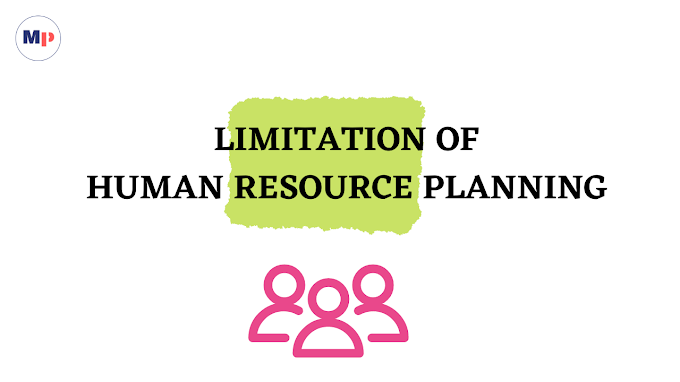Meaning of Audit Working Papers
An auditor during the course of audit uses many papers and documents, some of which he keeps with himself and others he sends to his client. He keeps such papers with him with this object that in future if he is charged o carelessness or negligence by his client or some other party, he can defend himself. Such papers are called as Audit Working Papers.
"Working papers related to audit work, are the personal property of the auditor, which the auditory prepares for every audit. These working papers present the informations received from the client relating to accounting records, methods used in the course of audit; his own conclusions and financial statements."
A. W. Johnson
Working papers of an auditor consist of:
- Evidence obtained during the audit examination;
- Details of the methods and procedures followed by him during the course of the audit;
- Conclusions reached by him in the course and at the end of the audit work.
In sum, we can say audit working papers are the records concerning an 'Audit Examination'.
Types of Audit Working Papers
In technical sense all the written material obtained or developed during the course of the audit work can be called audit working papers. The form and contents of these however, differ depending on the type of audit and the preference of the concerned auditor.
However, the following papers constitute audit working papers :
- Appointment letter of the auditor and the letter containing terms and conditions of the audit.
- Copies of the correspondence with the client relating. to audit in question.
- Documents relating to analysis of financial statements received from the client.
- Clarifications of the informations received from the client.
- Audit Note Book.
- Audit Programme.
- List of debtors and creditors; fixed assets, investments etc.
- Copies of the audit report and final accounts of the previous years.
- Rules and bye-laws framed at the time of setting up the enterprise. In case of companies, copies of memorandum and articles of association and their summaries, pertaining to the audit in question.
- Copies of all important resolutions of shareholders and directors' meetings, recorded in the minutes book.
- List of missing vouchers.
- Totals and balances of all important accounts.
- Copies of contracts entered by the enterprise.
- Certificates of officials with regard to bad debts.
- Correspondence with debtors, customers, bankers, creditors, etc., and conformation obtained from them.
- Certificate from the officials regarding quantity and value of stock-in trade.
- Certificate from authorized official with regard to inclusion of all outstanding assets and liabilities of the final accounts of the year under audit.
- Adjustment entries in the journal.
- Draft of final accounts.
- Matters to be included in the audit report with a draft copy of the audit report.
- Nothings and quarries made in the course of the audit work and their replies.
From the above it may be seen that working papers can be classified under the two heads:
- Derived from the client.
- Developed by the auditor himself in the course of audit work.
Objects of Audit Working Papers
Working papers form an important part of the audit work. They are the medium, which the auditor uses to express his technical knowledge of accounting and audit principles and procedures as applied in the preparation of reports, statements and analysis of business information and transactions.
Advantages of Audit Working Papers
The important advantages of the working papers may be stated as below:
Support for auditor's opinion:
SAP-3 states, "Sufficient competent evidential matter is to be obtained through inspection, observation, inquiries and confirmation to afford a reasonable basis for an opinion regarding the financial statements under examination." From this statement, it can be easily concluded that audit working papers provide the auditor sufficient background for giving his opinion about the financial state of affairs of the enterprise.
Helpful in the preparation and certification of audit report:
Working papers serve as the notes for the auditor for preparing his audit report of the enterprise. Schedules analysis etc., prepared by the auditor in the course of his audit work, serve as the basis and also certificate for this audit report.
Help in the performance of the audit work:
Working papers help the auditor in coordinating the work of the audit staff as well as directing them in the conduct of the audit. These papers help in the evaluation of the progress of the audit work also.
Work can be easily divided among the audit staff:
These papers help in the division and distribution of work among the audit staff. These working papers divide the work in the senior and junior staff and the senior staff may easily monitor the work of the junior staff. These papers are very much useful where the audit work is being conducted at various branches, or at various offices of the enterprise.
Can be used as a permanent record:
Working papers serve as a permanent record as the audit procedures adopted and examination of various books of accounts done are recorded in writing. This written record becomes a permanent record and can be used for many purposes by the auditor in the present as well as in future also.
Create a bridge between original transactions and financial statements:
Working papers can be prepared by the auditor himself or by his staff also. The analysis of transactions provide an important link between the original transactions and the financial statements. The reason of this is that the work done by the auditor or his staff is in the nature of tracing the origin of the business transactions of the enterprise. This is based upon the books of the original entries. Further, rectification and adjustment entries are also based upon these papers, as the errors located are to be rectified through the journal entries.
Act as a basis for review and revision of internal control system:
Questionnaires relating to Internal Control System adopted by the enterprise are part and parcel of working papers. Where the auditor finds weaknesses in the internal control system of the enterprise, he suggests his client for a review and revision of it. Thus, these papers help in the depth review of the internal control system.
Help in evaluation and training of audit staff:
Working papers serve as a means of examination of the audit staff. These papers help the auditor to know whether the work done by the audit staff is upto the prescribed standard. These papers reflect the auditor's capability and capacity to audit, since at every step he has to take proper decisions regarding the audit work to be done by his staff.
Good evidence for the work done:
Working papers serve as evidence of the nature and extent of work being done by the auditor and his staff. The audit tests done, procedures followed by him and conclusions arrived by him are all recorded and form part of these working papers. These serve as a good evidence for the auditor. In case he is charged for negligence, he can use these papers as a defence for himself.
Can be a suitable basis for further work:
The auditor and his staff takes notes and makes out analysis of the work done by him or his audit staff. These notes are of great importance for further work and may be used by the auditor in several other areas of the enterprise.





